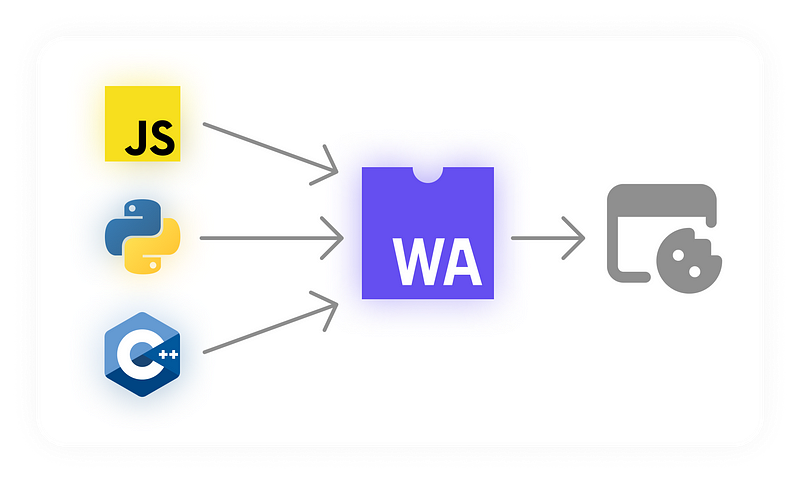WebAssembly: A Game Changer in Web Development
Written on
Understanding WebAssembly
WebAssembly, or Wasm, is poised to transform the web development landscape. It allows developers to leverage the capabilities of languages like C++ directly in the browser, facilitating a new era of performance and efficiency.

The Everyday Browser Experience
Browsers are an integral part of our daily lives, serving as the primary tool for searching, learning, and interacting online. While they excel at these tasks, complex operations such as video editing or heavy data processing often remain out of reach. Traditionally, these tasks require desktop applications, which can utilize a wider array of programming languages and capabilities.
In contrast, web development has primarily relied on JavaScript for front-end tasks, while back-end options, though varied, still lack the power needed for intricate applications like games. Desktop applications, on the other hand, benefit from powerful languages such as C++ or Java, which excel in performance and capabilities.
The WebAssembly Advantage
WebAssembly addresses these limitations, allowing developers to run code written in various languages, such as C, C++, Rust, and more, directly in the browser with minimal effort and no noticeable speed loss. This binary instruction format provides near-native performance for web applications, opening up a world of possibilities for developers.
Debugging and Accessibility
One of the key features of WebAssembly is its focus on making debugging and testing straightforward. The modules can be represented in a textual format, aiding in tasks like optimization and learning.
Moreover, WebAssembly is designed to integrate seamlessly with the existing web infrastructure. It maintains the web’s versionless and backward-compatible characteristics, granting access to the same Web APIs as JavaScript, thus enhancing interactivity.
Limitations to Consider
However, WebAssembly is not without its challenges. It can currently only interact with JavaScript for accessing Web APIs, meaning that developers must go through JavaScript to manipulate the DOM. Additionally, while it functions on both desktop and mobile platforms, mobile browsers impose significant restrictions that complicate the safe deployment of many applications.
Currently, browsers like Safari on iOS and Chrome on Android struggle with memory allocation, often capping it at around 300MB without specific workarounds. Furthermore, WebAssembly lacks a garbage collector, which means managing memory must be handled manually by the developer.
Is WebAssembly Right for You?
For developers who can navigate these limitations, WebAssembly offers substantial advantages that cater to a broad spectrum of applications. Whether you’re creating a sophisticated video editor or a full-fledged game, Wasm provides a unique environment where users can access powerful tools directly in their browsers without the need for installations.
Conclusion
In summary, WebAssembly represents a significant leap forward in web technology, simplifying complex development tasks for both developers and users. While there's much more to explore within this rapidly evolving field, the potential for innovation is vast. If you found this overview insightful, consider giving it a clap and following for more content on this exciting topic!
For additional resources, check out PlainEnglish.io. Sign up for our weekly newsletter and follow us on Twitter, LinkedIn, YouTube, and Discord. Interested in Growth Hacking? Explore Circuit for more insights.